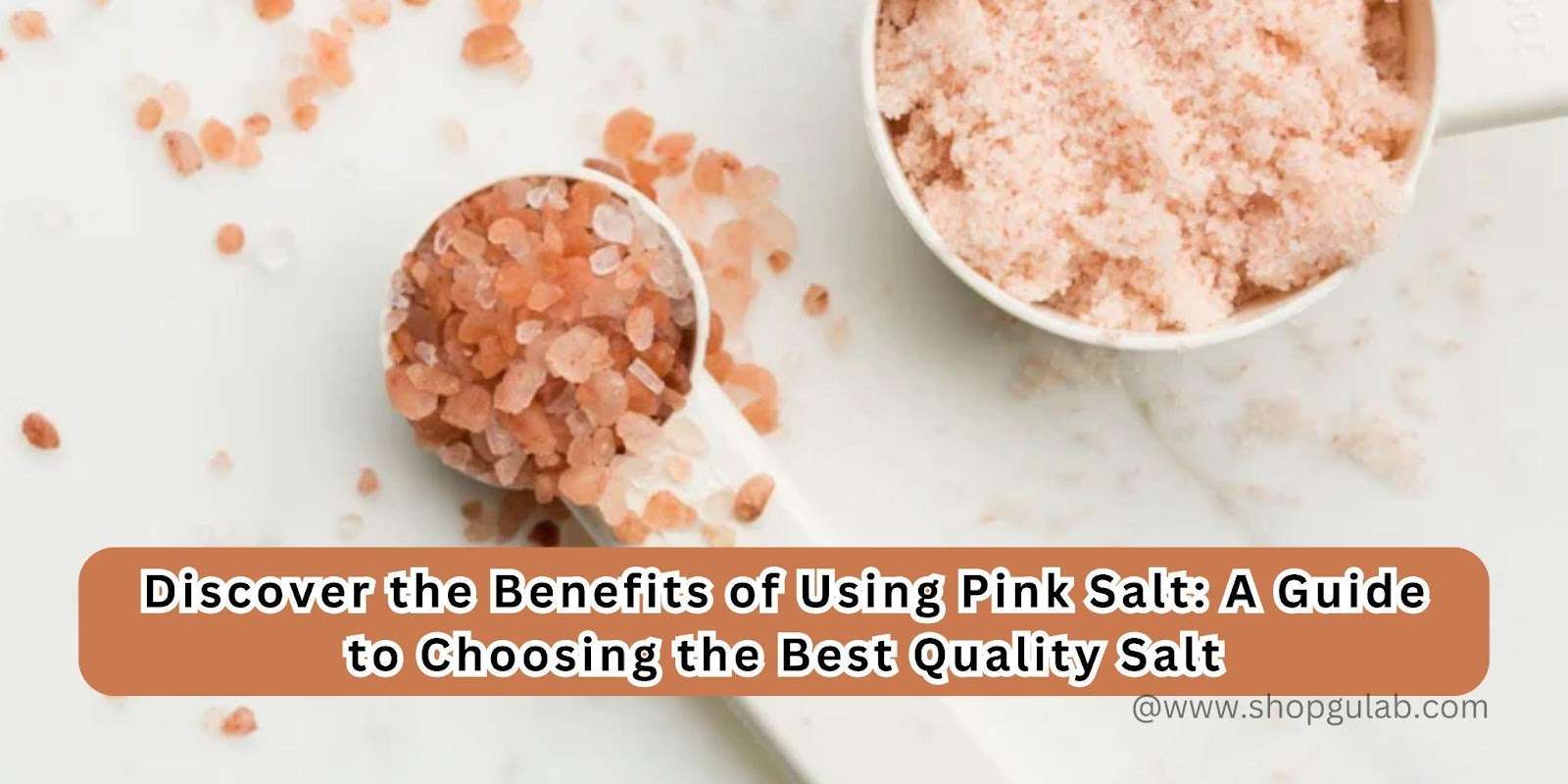Pink salt for sale is mined in Himalayas and gets its hue from iron. The high concentration of iron gives the salt its distinctive “pink” hue. Most people think it developed when ancient bodies of water evaporated. This salt is harvested manually and minimally treated to keep it natural and unadulterated. Therefore, it is seen as more natural than regular salt.
Pink salt has numerous advantages.
An Expansion of the Use of Natural Salt:
Compared to regular table salt, pink salt for sale is closer to its natural state because it is mostly extracted by hand. It is not thought to include any artificial ingredients or ingredients. However, table salt has undergone extensive processing and is frequently a mixture of anticaking additives such as magnesium carbonate and sodium aluminosilicate.
The Need to Reduce Sodium Intake:
Despite popular belief, there is little difference between pink Himalayan salt and conventional table salt; both contain about 98% sodium chloride. The bigger particles of pink Himalayan salt mean that it has less sodium per teaspoon than regular table salt. In addition, you might need to use less of it than regular salt because of its more pronounced saltiness. Therefore, pink salt can help you keep your sodium intake in check.
Mineral Content Is Much Higher:
One of the best things about Pink Himalayan salt is the 84 distinct minerals it has. Studies have shown that pink salt is a more nutritious alternative to conventional table salt due to its increased iron, sodium, magnesium, potassium, and calcium levels.
Aids in Maintaining Fluid Balance:
The protection against dehydration is a well-known advantage of Pink Himalayan salt. Pink salt, it is widely believed, can help you stay hydrated if you add it to your diet and drink. Sodium also helps maintain a healthy fluid balance in the body.
Pink salt’s many uses
Use it as a Refreshing Face Mist:
One bottle of face spray can be made with one cup of distilled water, one teaspoon of magnesium flakes, one tablespoon of pink Himalayan spray, and three to five drops of essential oil like eucalyptus, lavender, or mint.
A Great Way to Exfoliate Your Skin:
With its unusually coarse grain size, Pink Himalayan salt makes for a fantastic exfoliant. Scrubbing removes dead skin cells and helps improve skin texture and open pores. Scrubbing can be beneficial, but care must be taken to avoid tearing or damaging the skin.
A Sore Throat May Feel Relief From It:
Pink saltwater gargling has the same calming effect on a sore throat as regular table salt. Pink salt water at body temperature helps break up mucous, kills bacteria, and reduces pain.
Your Electrolyte Levels May Benefit From It:
Restoring your body’s electrolyte balance using pink Himalayan salt is possible. You can replenish your body’s electrolytes by drinking 2 cups of distilled water, 1/4 teaspoon of pink Himalayan salt, one tablespoon of honey, and 1/2 cup of fresh lemon juice.
Distinct varieties of salt:
A person’s preference, cooking method, and salt of choice all play a role in making the decision. Pink Himalayan salt is an excellent option to add a colorful, crunchy touch to your dishes.
Kosher salt:
With its mild flavor, gritty texture, and fast-dissolving versatility, Kosher salt is considered the best for cooking.
Sea salt:
Evaporation of salty ocean water produces sea salt. Even while sea salt is coarser than table salt, it is much less gritty than kosher salt. A wide variety of salts all fit the technical definition of “sea salt,” but they all differ in their saltiness and texture.
Table salt:
Finely ground table salt, harvested from underground salt deposits, is the most common salt used in cooking and eating. Most commercially available brands have been iodized (mostly to help with iodine deficiency), refined to eliminate trace minerals, and supplemented with anticaking chemicals to prevent clumping in moist settings.
Himalayan pink salt:
This salt, hand-mined from the Khewra Salt Mine in Himalayan Mountains, is popular in health spas and known for its reddish tint, which can range from very pale to vibrant pink. Because it contains all 84 naturally occurring minerals in the human body, Himalayan salt often has a more robust and nuanced flavor than table salt. A favorite cooking stone for delicate meats like fish, its slabs can retain heat for hours.
Conclusion:
Flavoring, not nutrition, is why we use salt. Even so, having the correct quantity of Pink salt for sale in your diet is crucial to keep your health in top shape. You can experiment with several types of specialty salt to add variety and flavor to your meals, but be mindful of your sodium intake.

As the editor of the blog, She curate insightful content that sparks curiosity and fosters learning. With a passion for storytelling and a keen eye for detail, she strive to bring diverse perspectives and engaging narratives to readers, ensuring every piece informs, inspires, and enriches.










